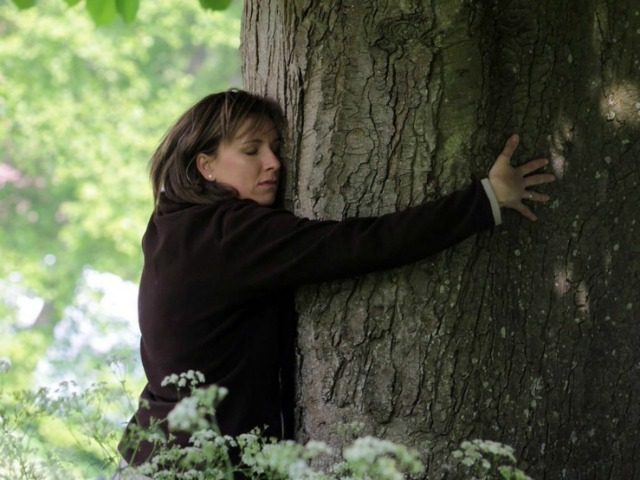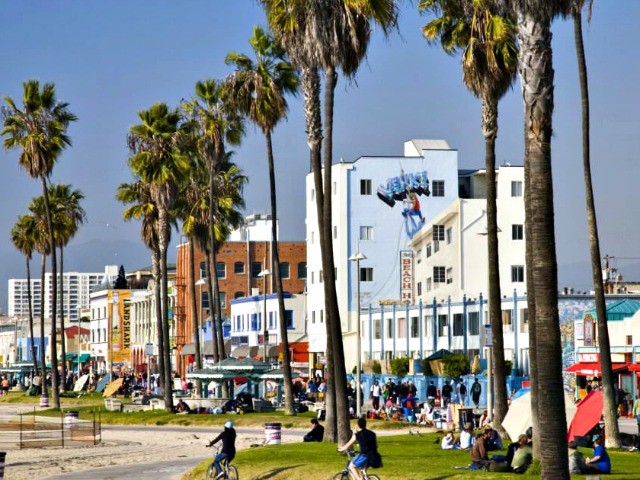An analysis from a geospatial data company argues the number of trees planted in different neighborhoods nationwide is unequal along racial lines, and says the threat of “tree inequity” is real and growing.
“EarthDefine uses an Artificial Intelligence (AI) classification model to detect areas of an aerial image that are covered by trees, as opposed to other ground cover like shrubs, buildings and asphalt. They then calculate the percentage of the total land area that is covered by trees — a metric called ‘tree canopy cover,’” the San Francisco Chronicle reported and compared the California city’s tree cover with other U.S. cities.
San Francisco has an estimated 669,000 trees, covering about 15 percent of the city’s total area. This is significantly lower than other cities, including Los Angeles, which has a tree canopy cover of 21 percent, New York City has 24 percent, and Seattle and Portland have nearly 30 percent of the area covered in trees.
The Chronicle reported EarthDefine, in partnership with PlanItGeo, provides this data for all U.S. cities every two years to help city agencies and conservation organizations keep track of tree plantings.
But it is the what the left-wing media outlets promotes as an underlying reason why some neighborhoods have less trees than others that is controversial. The importance of trees is also a departure from the common consensus on their benefits:
Trees are hugely important to a city. Not only do they enhance its aesthetics, but they also provide wide-ranging environmental and social benefits. According to Vibrant Cities Lab, a collaboration between the US Forest Service, American Forests and the National Association of Regional Councils, trees can reduce air pollution, clean stormwater, as well as improve the physical and mental health of nearby residents. Some studies even find that more trees are associated with reducing certain types of crime and improving students’ academic performance.
To understand what type of neighborhood is associated with more or less tree cover, we compared the tree canopy numbers with the median household income of each San Francisco census tract — a geographic area with about 1,200 to 8,000 residents. Overall, we found that wealthier census tracts tend to have more tree cover than lower-income tracts. On average, a census tract with a median household income of over $150,000 has 15 percent of its area covered by trees, compared to just 7 percent in a census tract with a median income of $80,000 or less.
This isn’t just an issue in San Francisco. Tree inequity exists in many U.S. cities. According to a study published in April of this year, low-income census blocks — small geographic areas equivalent to city blocks — have 15% less tree cover than high-income census blocks. A primary reason for this inequality is historical redlining and ongoing segregation within cities. A recent study showed a link between residential housing segregation from the 1930s and the size of tree canopies in several metropolitan areas. Researchers found that areas formerly graded A in neighborhood appraisal maps — the nicest neighborhoods generally inhabited by white residents — had nearly twice as much tree canopy as areas formerly graded D — areas with poor housing inhabited by racial minorities. Even today, cities are segregated by income, with wealthy families having the resources to move to areas within the city with more trees, while lower incomes families are unable to make similar moves.
The Chronicle reported the city has a 20-year plan to increase its tree population from 125,000 to 155,00 by 2034.
“Not only is the city adding more trees, but it is also prioritizing planting them in neighborhoods that have the fewest number of street trees and the poorest health outcomes,” the Chronicle concluded. “In doing so, the city hopes to “create a more equitable distribution of tree canopy and reduce greening inequities in different areas of the city.”
Follow Penny Starr on Twitter or send news tips to pstarr@breitbart.com.


COMMENTS
Please let us know if you're having issues with commenting.